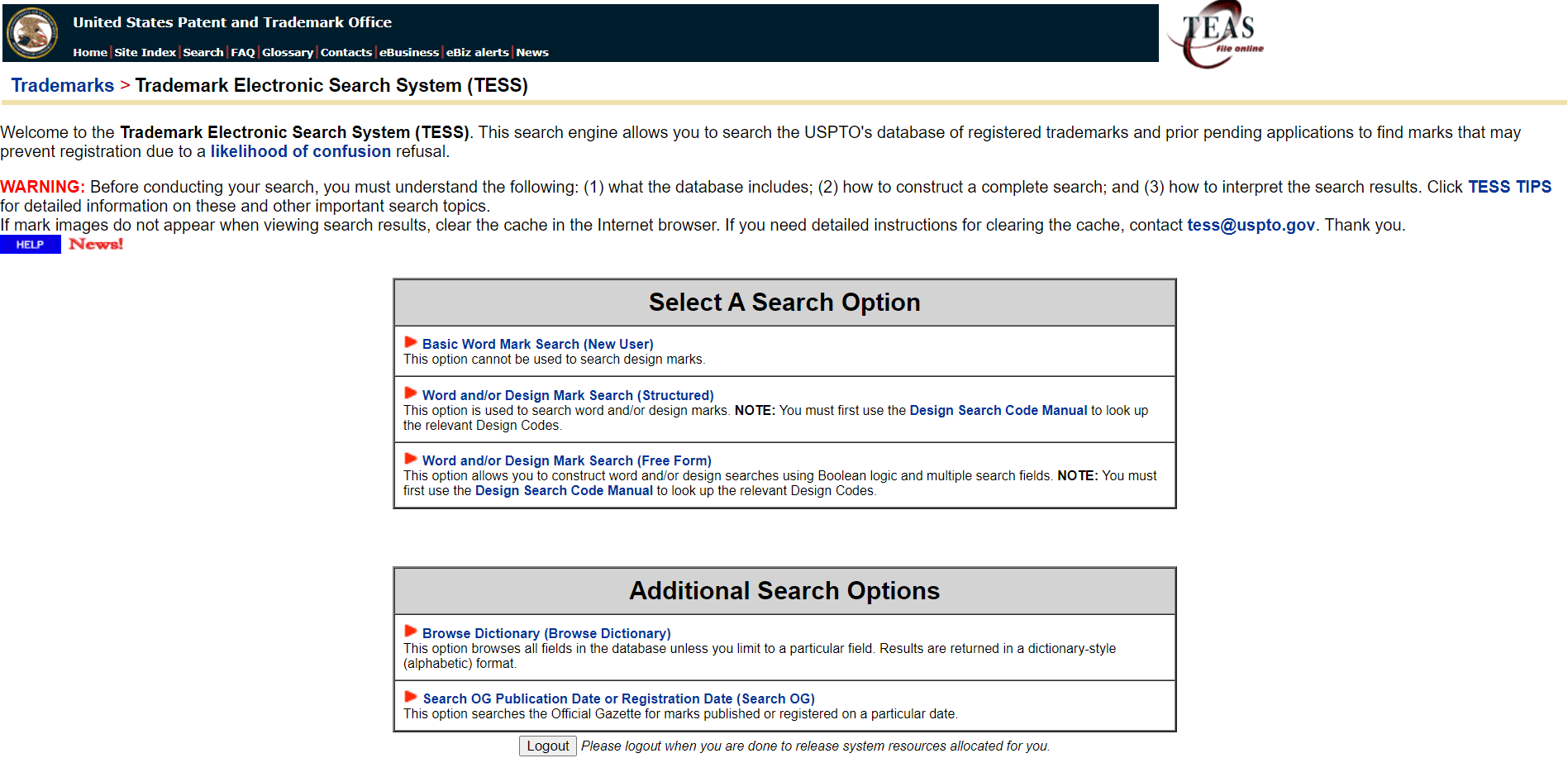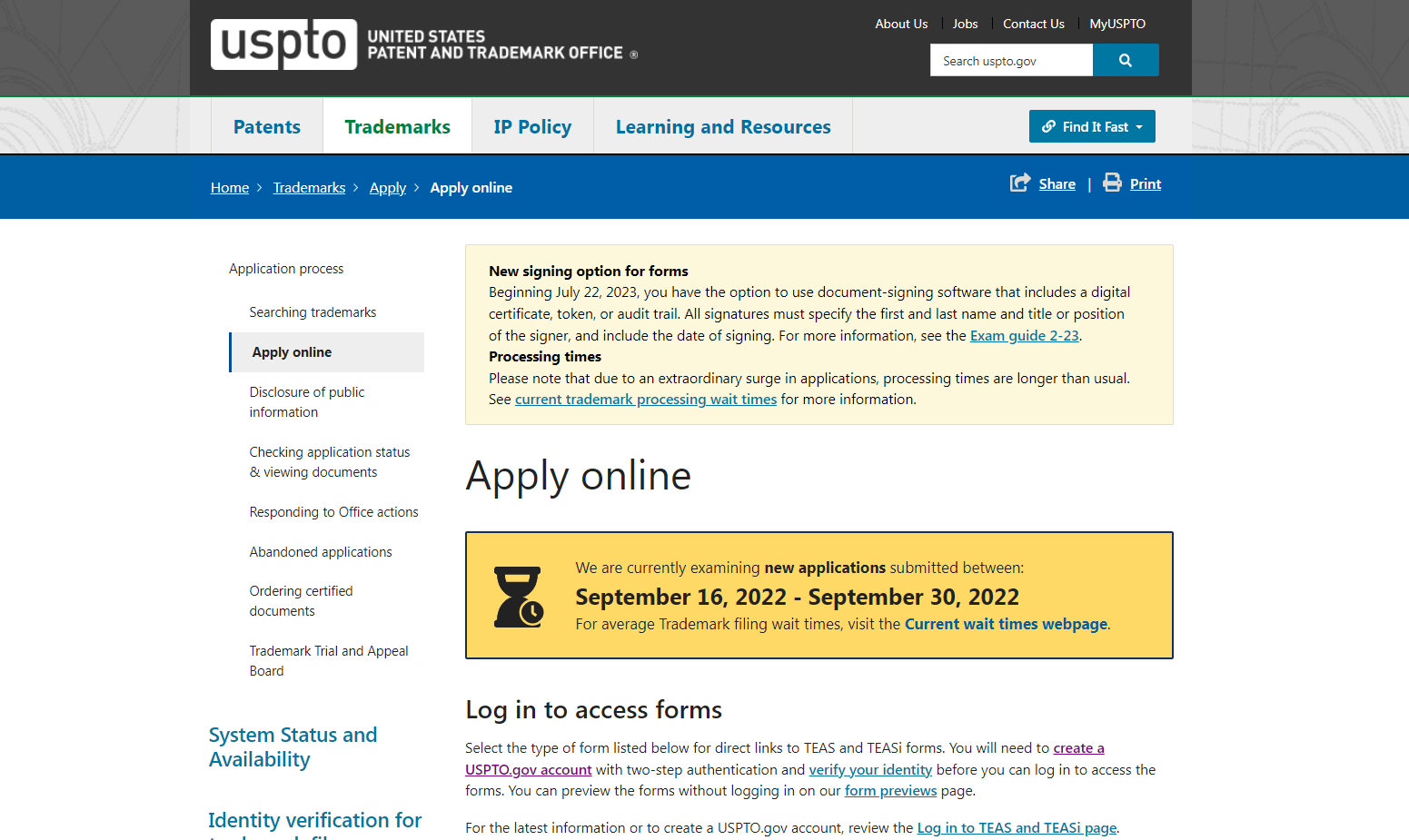
Entering the business world can often feel like diving into a sea of complex terms and jargon that seem as if they’ve been specifically designed to confuse. On this journey, you’ll come across many critical terms, but today we’re focusing on one that carries significant weight: “What is a trademark?“ Whether you’re aiming to start an LLC, launch a small business, or even if you’re just an individual creator diving into a unique project, trademarks are something you’ll want to understand.
In this introduction, Webinarcare Editorial Team will explore the concept of trademarks, their importance, and the legal framework surrounding their registration and enforcement. So let’s navigate through the details and discover the power of trademarks!
On this page, you’ll learn about the following:
The Basics of Trademarks
Let’s dive into trademarks, a crucial component of business operations that often goes unnoticed. Trademarks are essential to entrepreneurship, as they safeguard a company’s unique identity and brands from potential infringement.
As some of us may know, a trademark is a name, slogan, logo, symbol, or design that distinctively identifies a company or its products. It’s a legal form of protection granted to businesses, allowing them to prevent others from using similar marks that could confuse consumers. This protective shield can cover everything from company names and product logos to specific color schemes.

It is better to understand how trademark works. However, it is still suggested that you speak with a legal professional before you begin registering your trademark after starting an LLC.
– WEBINARCARE EDITORIAL TEAM
How to Get a Trademark?
Navigating the trademark process may seem daunting, but we’re here to guide you every step of the way. Understanding the process is the key to successfully securing your trademark. Here’s how you could break it down:
Firstly, let’s clarify what a trademark is. A trademark is a type of intellectual property consisting of a recognizable sign, design, or expression. It distinguishes your company’s goods or services from those offered by others.
Search for Existing Trademarks is the first step. It’s crucial to ensure your proposed trademark doesn’t already exist. You can search the U.S. Patent and Trademark Office’s (USPTO) database for any marks similar to yours.

Prepare and Submit Your Application is the second step. Once you’ve confirmed the uniqueness of your trademark, the next step is to apply with the USPTO. Applications require specific information about the applicant and the mark, such as the categories of goods or services the mark will represent.

Responding to Office Actions is the third stage. The USPTO will review your application and may issue ‘Office Actions’ that must be addressed. These often relate to legal issues concerning your mark that must be rectified before proceeding.
Notice of Publication marks the start of the fourth stage. Once all legal issues are resolved, the USPTO will publish your mark in its Official Gazette. This provides a 30-day window for anyone to contest your mark.
The Registration stage is the final step. The USPTO will register your trademark if no one opposes your mark within the Gazette’s publication period.
Don’t forget an LLC can own trademarks. If you run an LLC, you should consider which trademark registrations will best protect your brand’s value.
If this process sounds complex, don’t worry – various professional Trademark Services can help. These services assist with searches, paperwork, addressing Office Actions, and more, helping to simplify the process.
To cap it all, the benefits of getting a trademark are immense. A registered trademark protects your brand, increases your company’s value, and gives you the tools to prevent others from using similar marks.
Notably, this process can take anywhere from 6 months to a few years to complete. But with persistence and the right resources, you can protect your brand and grow your business.
Recommended: In protecting your brand, you need to register your trademarks. With Legalzoom’s Trademark Registration Service, they will safeguard your brand, fortify your market position, and ascend the ladder of business success with confidence and peace of mind. That’s why we recommend –
LegalZoom – $599 + Federal Fees
Benefits of Having a Trademark
Needless to say, there are numerous benefits when we trademark our business or product. Here are a few key points:
- Brand Protection: A trademark provides legal protection, preventing others from using a similar name, logo, or design that could confuse customers. It safeguards your brand identity and reputation.
- Exclusive Rights: Trademarks grant the exclusive rights to use the registered mark in connection with the goods or services it represents. This allows you to restrict others from benefiting from your brand equity and market presence.
- Market Recognition: A well-established trademark helps customers easily identify and differentiate your products or services from competitors. It fosters trust, loyalty, and brand recognition, increasing customer loyalty and market share.
- Business Expansion: Trademarks open doors for business expansion, allowing you to extend your trademarked brand into new markets and product lines. It provides a foundation to build a strong and recognizable brand presence.
- Financial Value: Trademarks can appreciate in value over time, becoming valuable assets for your business. They can be sold, licensed, or used as collateral to secure loans and attract investments, enhancing your company’s financial standing.
- Legal Protection: Registering a trademark strengthens your legal position in case of infringement or unfair competition. It gives you the right to pursue legal remedies, seek damages, and defend your brand against unauthorized use.
- Deterrent Against Counterfeiting: A registered trademark is a deterrent against counterfeiters. It enables you to take legal action against individuals or entities attempting to replicate or counterfeit your products, protecting your customers and revenues.
Here’s a quick rundown of these perks for easy visual reference:
| Benefits of Having a Trademark |
|---|
| 1. Brand Protection |
| 2. Exclusive Rights |
| 3. Market Recognition |
| 4. Business Expansion |
| 5. Financial Value |
| 6. Legal Protection |
| 7. Deterrent Against Counterfeiting |
Obtaining a trademark provides numerous benefits, including brand protection, exclusive rights, market recognition, business expansion opportunities, financial value, legal protection, and a deterrent against counterfeiting. It is a valuable investment contributing to your business’s long-term success and sustainability.
Trademark Services
Several services can help us navigate the trademark process, from conducting thorough searches to handling the application process. Some enterprises might consider employing a full-service law firm, while smaller businesses or LLCs may opt for online trademark services.
In the world of trademarks, it’s about protection, identity, and ensuring our valuable business assets remain ours. Ultimately, we’re not just protecting a logo or a name but shielding our legacy and business’s future. We reviewed these trademark services for you to check out!
Importance of Trademarks
Let’s talk about trademarks and why they’re critical to your LLC. Trademarks offer protection. They shield your brand, whether that’s your business name, logo, or a specific product or service you offer. Once you own a trademark, others can’t legally duplicate it. This secures your unique brand’s identity and helps your audience distinguish you in a crowded marketplace.
Why does this matter? Well, building a brand isn’t easy. We spend hours developing unique products or services, perfecting our logo, and fine-tuning our marketing strategies. Trademarks ensure all that hard work doesn’t go to waste. You wouldn’t want a competitor profiting off your efforts, would you?
Let’s discuss another important aspect: Safeguarding your reputation. With trademark protection, you can prevent other companies from tainting your image with substandard products or services. You’ve worked hard to earn your customers’ trust; trademarks help maintain that trust. Your consumers know what they’re getting when they see your trademark, which is essential for customer loyalty and return business.
Now, how do you get a trademark? It’s pretty straightforward. You apply with the United States Patent and Trademark Office (USPTO). The process includes:
- A comprehensive search for similar existing trademarks.
- Filing of the application with required details and fees.
- Responding to any USPTO Office Actions or queries.
- Regular monitoring of the trademark status until it gets registered.
Consider seeking professional help for this, as the process can be complicated. Many trademark services are available that streamline this task for businesses; they take care of the application, respond to possible inquiries from the USPTO, and monitor the trademark status for you.
Bottom line: We can’t overstate the importance of trademarks to your LLC. They protect your hard-earned brand, safeguard your reputation, and enrich your value in the eyes of customers and potential investors. So, don’t wait. Secure your trademark today and fortify your brand for tomorrow!
The Impact of Trademarks
We’ve delved into what a trademark is and uncovered its integral dance with business. Trademarks are significant in business— they’re more than just a symbol or brand. They’re vehicles that deliver a company’s reputation directly to consumers’ doors. They act like a multi-lingual interpreter, proficiently translating goods and services’ quality, value, and origin.
Exploring the trademark’s role further, we find it’s an omnipresent guardian standing by your products, services, or reputation. Trademarks hold the line against imitators and competitors infringing on your brand. This legal protection for your brand strengthens with the time you’ve registered the trademark and the geographical area it covers.
A closer inspection reveals even more advantages:
- Market distinction: Having your business stand out in a crowded business scene is every entrepreneur’s dream. Trademarks equip you with a nifty tool to make it happen.
- Legal authority: Trademarks grant exclusive property rights, staking a powerful claim in legal disputes.
- Economic benefits: They offer immense business value, often increasing in worth as your business grows.
Now, the intriguing part is how to acquire a trademark. It’s simpler than you might think. Register a trademark with the U.S. Patent and Trademark Office (USPTO). The registration process involves the following:
- Search for similar trademarks
- Filing a USPTO application
- Patience while they review the application
- Approval
Although, it can be complex to handle this process alone as it requires a thorough understanding of trademark law. Numerous businesses, particularly LLCs, frequently opt for trademark services. These services simplify the acquisition process, ensuring all the legal bases are covered and improving your chances of successful registration. Examples of these services include conducting a comprehensive search of existing trademarks, well-drafted applications, and legal advice on trademark infringement issues.
FAQs
A trademark is a distinctive symbol, word, phrase, design, or combination used to identify and distinguish goods or services of a particular source.
Registering a trademark provides legal protection, exclusive rights to use the mark, and a basis for legal action against infringers.
Trademark registration can last indefinitely if properly maintained and renewed at the required intervals.
A trademark protects brand names and logos used in commerce, while a copyright protects original works of authorship such as literary, artistic, or musical creations.
Conduct a comprehensive search of existing trademarks using the USPTO database and other search tools to determine if a similar mark is registered.
Yes, slogans or phrases can be trademarked if they are distinctive and not common.
It is possible to trademark a color or smell if it meets certain criteria of distinctiveness and is associated with a particular brand.
Hiring a trademark attorney is not mandatory, but it is recommended for a more seamless and effective application process.
The TM symbol represents an unregistered trademark, while the ® symbol indicates a registered trademark.
Trademark rights are generally limited to the country where registration is obtained. However, international trademark registration systems like the Madrid Protocol facilitate protection in multiple countries.
A priority claim allows applicants to secure an earlier filing date for their trademark based on an earlier filed application in their home country or other countries party to international agreements.
Trademark protection is typically specific to the goods or services the registration covers. If a different industry or unrelated goods are involved, others might be able to use a similar mark.
Generally, amendments to the mark are not allowed once a trademark is registered. It is recommended to seek legal counsel if a change is desired.
Yes, a trademark can be sold or licensed to other entities or individuals through agreements that define the rights and limitations of use.
Yes, you can oppose a pending trademark application if it conflicts with your existing rights. The opposition process is conducted through the USPTO.
The Supplemental Register is a secondary register maintained by the USPTO for trademarks that do not qualify for the Principal Register but still offer some protection.
If someone infringes on your trademark, you may have grounds to take legal action, seek damages, and potentially secure an injunction to prevent further use of your mark.
Personal names can be trademarked if used in commerce and meet the criteria of distinctiveness and non-confusion with existing trademarks.
Yes, the TM symbol can be used on an unregistered trademark to indicate that you claim rights in the mark, even though it is not officially registered.
The cost of registering a trademark depends on various factors, including the number of classes, legal assistance, and government filing fees. It can range from a few hundred to several thousand dollars.
Conclusion
We must always remember the profound impact of trademarks on our business endeavors. Its importance is rooted in the defense of our brands and nurturing their growth and recognition. Remember that, as with all good things, the successful attainment and utilization of trademarks requires understanding and strategizing. Until next time, we hope your journey of creating a distinctive and protected brand is successful!

